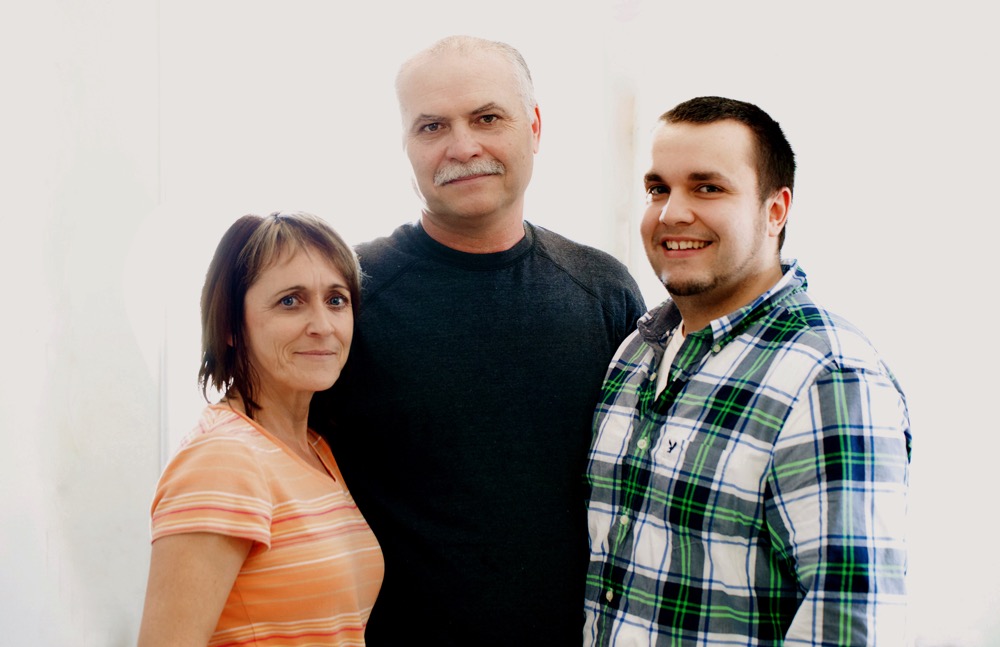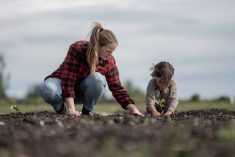It’s been 10 years since Country Guide readers first met Rudy and Leslie Reimer. They had just started their journey into aquaculture, and admit that in those early years it felt like they were swimming against the current. The tide has turned. What have they learned about building a new on-farm business? How did they succeed?
The Reimers were losing money. Two years into their indoor trout project, they felt they were set up for failure. There was only one sensible thing to do. Shut it down, fix whatever was wrong and start over.
Read Also

Building a farm legacy that outlasts you
A farm’s legacy isn’t just about the land; it’s also about the values and the impact that continue long after the current owner has stepped away.
And they’re glad they did. Today, their Watersong Farms is one of only a handful of Ocean Wise Green certified aqua-ponds in Canada, and they are the only indoor trout farm to achieve the status.
It shows that sometimes in a farm diversification or value-add project, the most important factors aren’t just the physical things like costs versus yields. Instead, attitudes like determination, courage and endurance, and aptitudes like being able keep it together and to keep searching for solutions when you’re under pressure are every bit as important.
Based on the Reimers’ experience, those qualities can be the most critical of all.
It’s a daunting but ultimately inspiring story. About 20 minutes north of Winnipeg, the sign for Watersong Farms is located not far off Highway 6. Most of the farmland in the area is used for cropping, and it would be easy to pass their gate without knowing this is the only indoor trout farm on the Prairies.
A decade ago, Rudy and Leslie Reimer had been thinking of ways to diversify their farm-gate chicken business. Originally they looked at an aquaponics idea where they could raise fish and flow the nutrient-rich water through a series of greenhouses.
It was about that time the federal and provincial governments came up with an aquaculture concept they felt could spark a new form of agriculture across the West, and they were looking for farmers to get it up and running.

The government goal was to help up to six farms get set up, and the Reimers went through the application process, with government advisers supplying all the details from design and budget details to insight into how the market works, where they could get feed, how to boost their productivity, and more.
At the end of the process, the Reimers were the only farm to go ahead, but it looked workable. Government would be responsible for capital costs, the Reimers would take care of the operating costs. Their investment would be around $630,000, and at the time it was estimated that the rate of return would be 14 per cent.
As they say now, it sounded like a good deal. But — and you knew there was going to be a “but” — the water got pretty muddy pretty fast.
Once they got into construction, the Reimers began to see areas they felt were underestimated, and essential items that weren’t included in the government funding plan, Rudy says. “We had to come up with the rest.”
And there was more bad news to come. The Reimers had naturally been excited when the first fish crop was about to be harvested. They had been told the ideal market size was for two-pound trout, but then discovered the only market for that size fish was in southern Ontario, 30 hours away.
Western Canada’s market wanted a larger fish, four to six pounds, and even then, those markets were underdeveloped at that time.
“Those first few years were a bit of a nightmare,” says Rudy.
Nevertheless, they kept going. Fish were shipped every second week, with the Reimers packing them live in water and ice and driving 12 hours over night to Lucky Lake, Sask., for 7 a.m. processing.
The Reimers felt there were lots of issues the government model did not foresee, and Rudy says disagreements developed between them and the “experts” who did not have the answers, and soon the sources of government funding dried up.

This was when it seemed the best idea might be to shut it all down, but the Reimers made a key decision. They would put all their energy into setting up the business on a sound basis, and they wouldn’t buy any more fingerlings until they did.
They felt they were on their own, learning a lot by trial and error. It took them six months, and by the time they restocked with new fingerlings, Rudy estimates there was a total of $2 million invested.
But fate intervened. It takes a little over a year for a fingerling to grow into a marketable fish, and by the time they did, consumer demand and the market had caught up. Things just started to work.
Their current base of customers for their farm-gate chicken business expressed an interest in purchasing trout, and the Reimers learned there was a high consumer demand expressed by Mariner Neptune Fish and Seafood Company Ltd.
Mariner Neptune is a Winnipeg-based business that acts as a retailer for fish and meat producers. They specialize in bringing high-quality food to the consumer market.
Now, Rudy and employees Jeff Rice and Jeff Tully process up to 800 fish or up to 4,500 pounds weekly for the fresh market.
Today, the tanks are teeming with fish of various sizes. The race-track oval tank structure is sectioned off into four different groups. The fish are moved through the system as they mature.
Water is kept at a constant 10 C to 11 C while a circulating current of fresh and filtered water moves throughout the system. Self-feeders that look like large funnels are placed throughout the structure. Just as with any other livestock, the fish quickly figure out how to trigger feed on demand.
Orders are received by weight, and Rudy and his two employees net the fish that will be processed to fill the orders and move them into the purge tank. The tank is stocked with several hundred four- to eight-pound fish as they prepare them for the last stages of processing.
The purge tank is then fed by cold water from the farm well. The fish are taken off feed and their metabolism begins to slow for about eight to 10 days, cleaning out their system and making their flesh firmer. The waste is vacuumed out of the tank to a holding pond to ensure they do not ingest any of it. The fish enter a semi-dormant state similar to that in the lakes where anglers know trout get better tasting as they prepare for winter.

On processing day, the water is cooled to zero degrees and the fish enter a sleepy dormant stage. They are gutted and packed in cold water and ice for the 35 to 40 minute trip to Neptune.
Rudy said that there are some smart fish that become talented at avoiding the nets. The largest one they captured weighed in at 16.7 pounds. By the time they get to be that large, they are very strong and it takes some skill to catch them.
Being the only indoor aquaculture operation on the Prairies has its challenges. Rudy recognized that the trout are a form of livestock farming and the rules to make money in any livestock venture apply across the board. In order to be profitable, they run at full capacity, which can be as many as 16,000 to 20,000 fish per group.
“The biggest problem in this industry is that the resources come from wild fisheries hatcheries, feed companies — everything either down east or out west on the coasts,” say Rudy. “Our biggest hurdle was finding a reliable fingerling supplier. We solved that by using a larger hatchery from southern Ontario. It means they travel a 30-hour trip to get here but we get as many as we want.”
With the new supplier, they can now source larger fingerlings at 50 to 70 grams, taking six to eight weeks off their production time.
As is, the Reimers are pleased with their overall rate of return. Fish prices have remained strong, the demand is strong and they can see continued growth in the industry.
Diversification continues
Rudy and Leslie are true entrepreneurs who have created several businesses during their 33-year marriage.
“We have been in ‘weird’ agriculture a long time,” says Leslie with a gleam in her eye. “One of us will get an idea, then we look at each other, laugh and say ‘shut up’ and the next thing you know, we are on to a new venture.”
In 2003, the couple moved from the Steinbach area where they had a Christmas tree farm and landscaping business. They were the first in the province to invite tourists to the farm for a corn maze experience and pumpkin patch. They would see over 5,000 people at their farm over the holiday season. After 10 years they were looking for a new challenge when Leslie’s parents wanted to sell and retire.
Believing that there was a way to inject new opportunities to their already successful farm-gate chicken business, they specialized in the fresh whole chicken market and raise enough birds for their 1,600 customers on demand, in the spring and fall.
With the trout farm now running smoothly, they decided that they would build a butcher shop, with the purpose of processing the trout. The inspected facility is licensed to cut a variety of meat as requests come in. As it turns out, Jeff Tully, manager of operations, is a butcher by trade. There is a smoker in the meat shop and he has become a master of sausage, smoked chicken and trout jerky and keeps coming up with new products. These have become a hit with customers.
In order to utilize their shed more than once or twice a year, the Reimers built a banquet kitchen and have put on several culinary events over this last year. Meanwhile, employee Jeff Rice is a chef by trade from Tofino, B.C. He takes pride in providing quality chicken and trout dishes for guests. He is skilled at interacting with the people because he knows the meat.
Over the last year, they have catered two larger events on their well-manicured pasture, an anniversary party with about 250 people and another event in July with about 120 plates.
This year they chose to up the fun factor by putting on a nine-course meal and hosting groups of eight. It became quite popular.
“Some nights we had eight people who knew each other and sometimes eight who didn’t,” says Leslie. “All of them made good connections and it was a lot of fun. I would do that as a business here every week!”
Connection is what it is all about. In a day and age where consumers are looking at safe food options, the Reimers’ quickly put people at ease when they learn about their products. They attend farmers markets once a week and their customers always report that they are happy with their purchase.
“I tell them that I don’t care if they eat our chicken or fish, but I care that they know where their food comes from,” says Leslie of these interactions. “When we tell them that we have touched their food, that means something to them and us.”
To curb boredom, the couple also became part of the Harvest Host network of RV stops. This RV network consists mostly of international travellers who tour the world in their RVs. Instead of parking at traditional camp grounds, most of the hosts are on farms or acreages where there is lots of room and relaxed restrictions or regulations.
“Our first guests were from Hawaii! They come from all over,” says Leslie.
Being part of the Harvest Host network has expanded their network of friends so their guest book includes people from Germany, South America, Iran and Iraq. Families enjoy that they can let their children play ball or Frisbee in a large space and the adults are invited to the gazebo for happy hour with the host couple.
“One night we had three campers in the yard, it was so fun!” says Leslie. “It’s not a big money generator but a great way to meet people from all over the world. We have invitations to go and stay with them. We will take them up on that.”
So what’s next for this ambitious couple?
Retirement.
After 10 years, the Reimers are at the point in their careers where they are considering selling Watersong Farms. Although not formally listed, Rudy said there has been some interest from foreign investors looking into getting into the indoor aqua market, but nothing has materialized yet. The operation is well diversified, and he has also wondered if it would be ideal for a multi-generational farm as it holds something for everyone.
“All I want is a camping fee and a cell phone bill,” says Leslie with a chuckle.
Now in their late 50s the couple would like to travel for a year. And they aren’t likely to get bored. In the back of their minds they’re thinking they may spend at least some of their time coming up with another “weird” agriculture venture for their return. Who knows what that may look like?
As a couple, Rudy and Leslie recognize each other’s strengths. Leslie is the marketer and is especially passionate about working with the public. Rudy is focused more on the production side but is also very engaged with the business.
“All we do revolves around this,” says Leslie, looking at what they have built. “But we know we have to get away.”
Business has played a huge role in their married life, says Leslie. But it can’t be all. “We still like each other even when we don’t have the distraction of the business. With all that is going on, we might as well have fun while we are here!”















